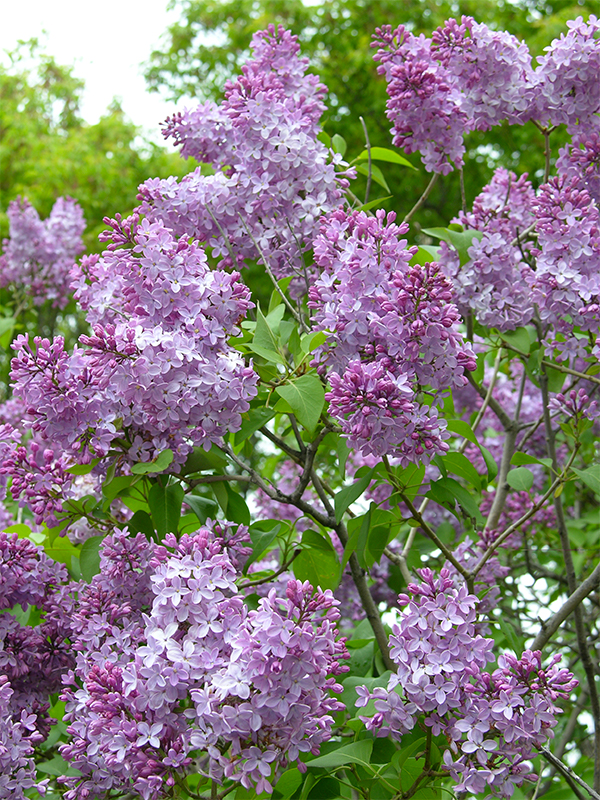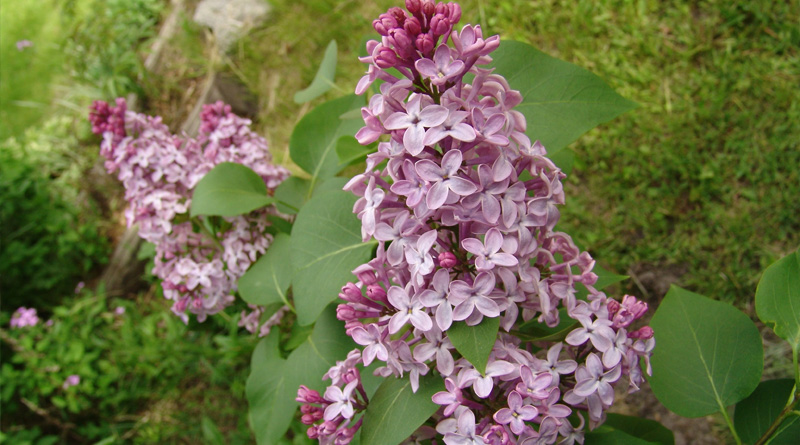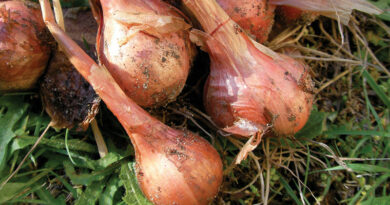Lovely Lilac
 Is there anything lovelier than a lilac with its swooning scent that perfumes all the air around it?
Is there anything lovelier than a lilac with its swooning scent that perfumes all the air around it?
Lilacs are long-lived and capable of growing hundreds of years. I have seen venerable bushes that must have meant a great deal to the early settlers who first planted them in Canada. Most are the common lilac, Syringa vulgaris, although there are 18 species and over 1,800 named varieties in existence, ranging in height from three to 30 feet. Most bloom in springtime, but there are a few varieties that bloom in summer such as Syringa villosa which blooms in June, and at least one, pink Syringa Josée, that will rebloom up to four times in a warm sunny summer if promptly sheared back when the first bloom has faded.
Lovely Lilacs are not native to North America, but come to us via Europe from the far East. Their botanical name is Syringa, meaning “tube” or “shepherd’s reed” in Greek. In Greek legend the nymph Syrinx was pursued by the god Pan, who turned her into a reed from which he made his first flute or Pan-pipes.
Lilacs are easy to grow – not too fussy about soil conditions – in fact they tolerate salt better than most woody plants so are a good street-side shrub or hedge. You can propagate them by transplanting suckers, by layering or even by taking soft cuttings in spring. There are hundreds of varieties including some that don’t sucker such as Miss Helen Wilmott, so if this matters to you, then be sure and ask your garden centre about suckering habits before buying.
They have a shallow root system, so don’t plant them too deeply or they won’t bloom. And note that a young lilac takes three to five years to mature to the point where you will get a good crop of flowers. A dose of horticultural lime will promote fragrance and so will a cool and sunny spring. Fertilizer will promote leafy growth this year while stimulating next year’s blooms, but keep the nitrogen low. Use a fertilizer with low first and last numbers and a higher middle number.
Prune lilacs right after they bloom to ensure a good crop of lovely blossoms the next year and don’t be afraid to shape them to keep them looking their best. They need thinning from time to time, and you can rejuvenate an old and top blooming lilac over three years by pruning one third of the stems right to the ground each year. Lilacs need as much sunshine as you can let them have, but at least six hours a day.
Among the hundreds of varieties, are colours ranging from white to dark purple to pink or wine coloured. There is even a purple variety with white borders. Other varieties have florets that come in doubles as well as singles, and some come with showy heads, others with less showy heads.
Why won’t my lilac bloom?
1. Not enough sunlight. Lilacs need at least six hours.
2. Too much nitrogen. Even if you aren’t applying it directly to the plant, nitrogen may be leaching into the root system from lawn dressings.
3. Too immature. Lilacs take three to five years to bloom well.
4. Pruning too late the previous year. Prune within two weeks of blooming and the sooner the better.
5. Planted too deeply or with too much mulch. Shallow root systems need air. Try scraping back soil. Too much mulch can also encourage suckering in dwarf varieties.






